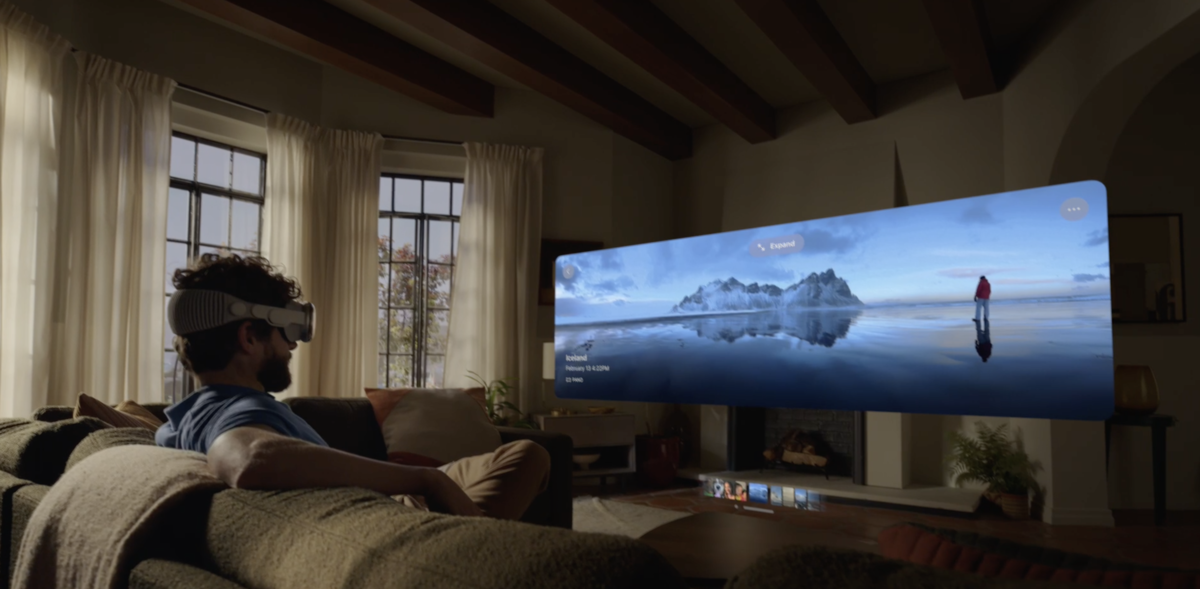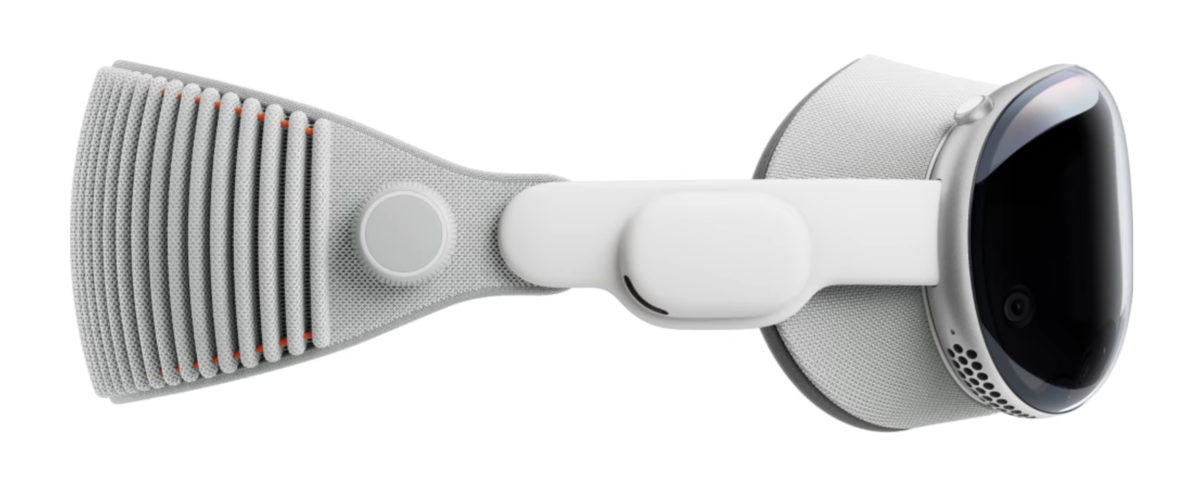Don’t mention the metaverse - Apple finally debuts its mixed reality headset
Apple has debuted its long-anticipated mixed reality headset, the Apple Vision Pro, with the aim of creating a “fully three-dimensional user interface” but with an eye-watering price tag.
The US$3,499 ($5,764) Vision Pro features a new headset operating system VisionOS that presents common Apple apps such as Safari, FaceTime and Apple TV+ overlaid on the environment around you.
In that respect, it has a lot in common with Microsoft’s HoloLens and the Magic Leap mixed reality headsets. But the similarities seem to end there. Vision Pro, despite its price putting it squarely in the luxury category, is aimed at consumers, where the HoloLens has primarily been adopted for commercial and industrial applications, such as engineering and design, viewing digital twin models and in the construction industry and even in surgery.
Journalists were largely kept away from the devices at today’s launch event, with the Vision Pro set to go on sale in the US early next year and other countries later in 2024. Most commentators are saving their judgement until they've actually worn the device to see if its as comfortable and intuitive as the PR material suggests.

Vision Pro lets you watch widescreen movies in 4K
But the specifications for the device and its design aesthetic are impressive. The Vision Pro is like a sleek pair of ski goggles with a ultra-high resolution display system with 23 million pixels. That’s higher resolution than a 4K display. Apple has developed a dual-chip design to drive the device - the M2 chip works in tandem with a new R1 chip that “processes input from 12 cameras, five sensors, and six microphones,” according to Apple.
There’s no need to use clunky controllers - cameras and sensors allow a user to control the Vision Pro with their eyes, voice and hand gestures. It is very much being pitched as a spatial computer, “changing the way users interact with their favourite apps, capture and relive memories, enjoy stunning TV shows and movies, and connect with others in FaceTime”.
That sets it apart from the VR headsets that dominate the market currently, such as Meta’s Quest and Oculus devices, which are aimed at video gamers and attempt to position Meta to lead the charge into the metaverse.
Apple executives didn’t even mention the metaverse today. Instead they touted benefits such as “infinite screen real estate”, “all-new ways to multitask”, and support for Magic Keyboard and Magice Trackpad, so you can use the Vision Pro as a high-quality wearable alternative to sitting in front of your Mac.
Movie watching is very much in frame, with a 180-degree 4K screen that can also display movies in 3D and features spatial audio for an immersive experience. While gaming isn’t to the forefront, the Vision Pro wil support around 100 Apple Arcade games at launch and be compatible with popular game controllers.
FaceTime video calls take on a new element as you see your contacts hovering on tiles in front of you and the Vision Pro becomes a video camera, with front facing cameras allowing you to record what you see. That was a controversial feature of the Google Glass augmented reality glasses, but people will definitely notice you coming if you walk down the street wearing an Apple headset. It comes tethered to a battery that “slips easily into your pocket”.
The visionOS software that runs the Vision Pro includes an app store dedicated to spatial apps and, as expected, Apple has partnered with the likes of Disney and National Geographic to show off the potential for third-party apps to make the most of Apple’s hardware.
A feature called EyeSight can detect when a person approaches you “letting the user see them while also displaying the user’s eyes. When a user is immersed in an environment or using an app, EyeSight gives visual cues to others about what the user is focused on”.

The focus on wellness apps and immersive meditative experience is clearly geared towards stressed-out and well-heeled executives looking for some time out from their busy schedules for some zen quiet.
Other than EyeSight, there really isn’t much here we haven’t seen in other virtual reality and mixed reality headsets that are already on the market. But as usual, the way Apple has put everything together seems to be that extra bit more thoughtful and user-friendly. The build quality and technical specifications will likely elevate the experience over everything already out there.
But this is a device for the wealthy - you could buy three MacBook Air laptops for the cost of a Vision Pro. The name really says it all, with ‘Pro’ already used by Apple to signify its biggest and best iPhone, iPad and MacBook. Perhaps then, Apple is choosing to wow the market with its flagship device at launch, and will debut a cheaper, no-frills device at a later date. For its headset to become a mainstream device, it will need to go down market.
